Affiliate Marketing on a Budget: How I Started with $0 and Made My First Commission (A Case Study)
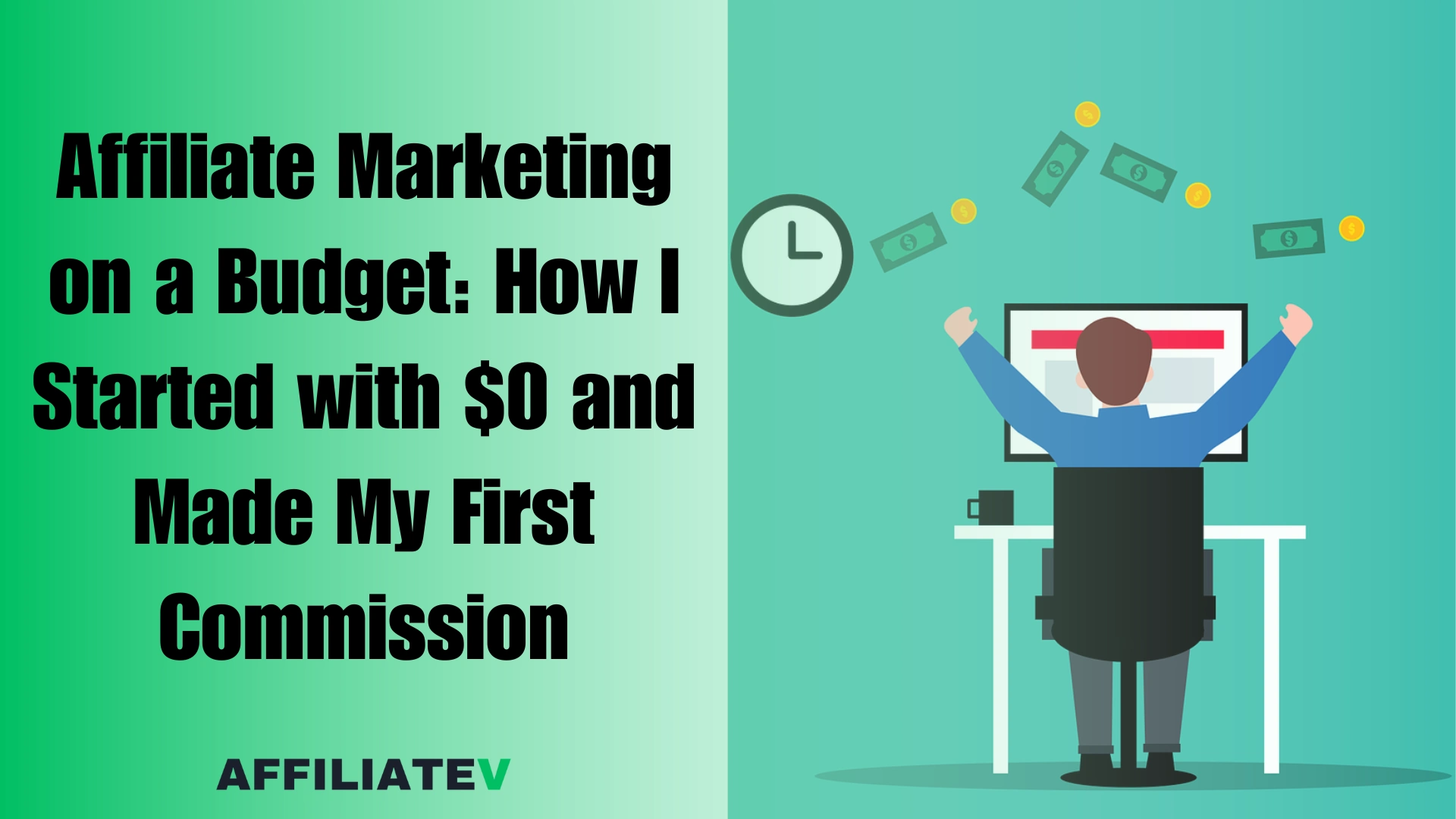
Introduction: Affiliate Marketing on a Budget
Can you really start affiliate marketing with no money? I did, and here’s exactly how I made my first commission.
Why I Started Affiliate Marketing with No Investment
I remember the exact moment I made the choice to get into affiliate marketing. I chose affiliate marketing because I wanted something that wouldn’t just make money for a little while but could continue bringing in income for years.
Instead of chasing short-term profits, I was looking for a long-term investment—something that could grow over time and provide steady earnings without needing constant work.
But here’s the thing. I was broke, frustrated, and tired of seeing people online making money while I struggled to figure it out. The main challenge was that every guide I read said I needed a website, paid ads, or some expensive tool. But I didn’t have a dollar to spare.
That’s when I made a decision—I was going to make my first commission without spending a single cent. No paid tools. No fancy software. Just grit, free resources, and smart strategies.
Do You Really Need Money to Start? Nope.
There’s a big misconception that you need to invest upfront to see results in affiliate marketing. Some people will tell you that without a website, paid ads, or premium tools, you won’t get anywhere. That’s simply not true.
Affiliate marketing is one of the few online businesses where you can start with nothing but your time and effort.
You don’t need to pour money into ads or expensive software. You just need to know where to focus your energy—and that’s exactly what I’m going to share.
What You’ll Learn in This Case Study
I’m breaking down exactly how I earned my first commission with $0. You’ll see the free tools, platforms, and strategies I used. No fluff. Just real, practical steps that you can follow.
By the end, you’ll know how to:
- Find the right affiliate programs without paying for access.
- Get free traffic to your links without a website.
- Build trust with an audience without spending a dime.
If you think affiliate marketing is only for people with money, this blog will prove otherwise. Let’s get started.
Key Takeaways from My Journey
- You don’t need money to start affiliate marketing—you just need a solid strategy.
- Free platforms like Medium, WordPress.com, and social media can drive real traffic.
- Choosing the right affiliate program makes a huge difference (not all are worth it).
- Writing content that actually helps people is the best way to get clicks.
- SEO is very crucial, even if you’re just using free tools.
- Pinterest is an underrated traffic source for beginners—seriously, don’t ignore it.
- Tracking what works (and what flops) helped me double my commissions.
- My first sale didn’t happen overnight, but consistency paid off.
- If I had to start over, I’d focus on building an email list from day one.
- The biggest lesson? Affiliate marketing isn’t “easy money,” but it’s 100% possible.
How I Started with $0 and Made My First Commission
I started affiliate marketing with zero investment because I had no choice—I couldn’t afford ads or fancy tools. Here’s how I did it.
Step 1: Choosing the Right Niche
When I started with affiliate marketing, I thought I could promote anything and start making money. I quickly realized that wasn’t going to work.
Without a clear niche, I had no direction, no audience, and no real way to make consistent commissions. I learned how important it is to choose the right niche from the start.
The biggest mistake beginners make is picking a niche based on what they like, instead of what people are actually searching for.
I knew I had to be strategic, so I focused on a niche that had high demand, good commissions, and room for a beginner like me.
Since I was already interested in online business and marketing, digital marketing tools became the perfect choice. Businesses always need tools to grow, and there are endless affiliate programs offering solid commissions.
I didn’t just pick this niche randomly—I made sure it was profitable first. The last thing I wanted was to waste time on something that no one cared about. To do that, I used free tools to research what people were actually searching for.
Google Trends was my first stop. I typed in different digital marketing tools to see if people’s interest was growing or dying. If a tool had steady or increasing interest, I knew it was worth considering.
Then, I went to AnswerThePublic and Quora to find out what questions people were asking about marketing tools. If tons of people needed help picking the right software, that meant there was demand—and where there’s demand, there’s money to be made.
I also checked competitor websites to see who was already in the niche. I searched for things like “best email marketing tools” and “top SEO software” to see what types of sites ranked on Google. If every result was from a huge company, I knew it would be too hard to compete.
But when I saw smaller blogs ranking, I knew I had a shot. The next step was finding low-competition keywords that people were searching for but weren’t too competitive.
I used Ubersuggest and Google’s autocomplete to find long-tail keywords like “best free email marketing software for beginners.” These are easier to rank for and attract people who are actively looking for recommendations.
Here’s an example of Google autocomplete:
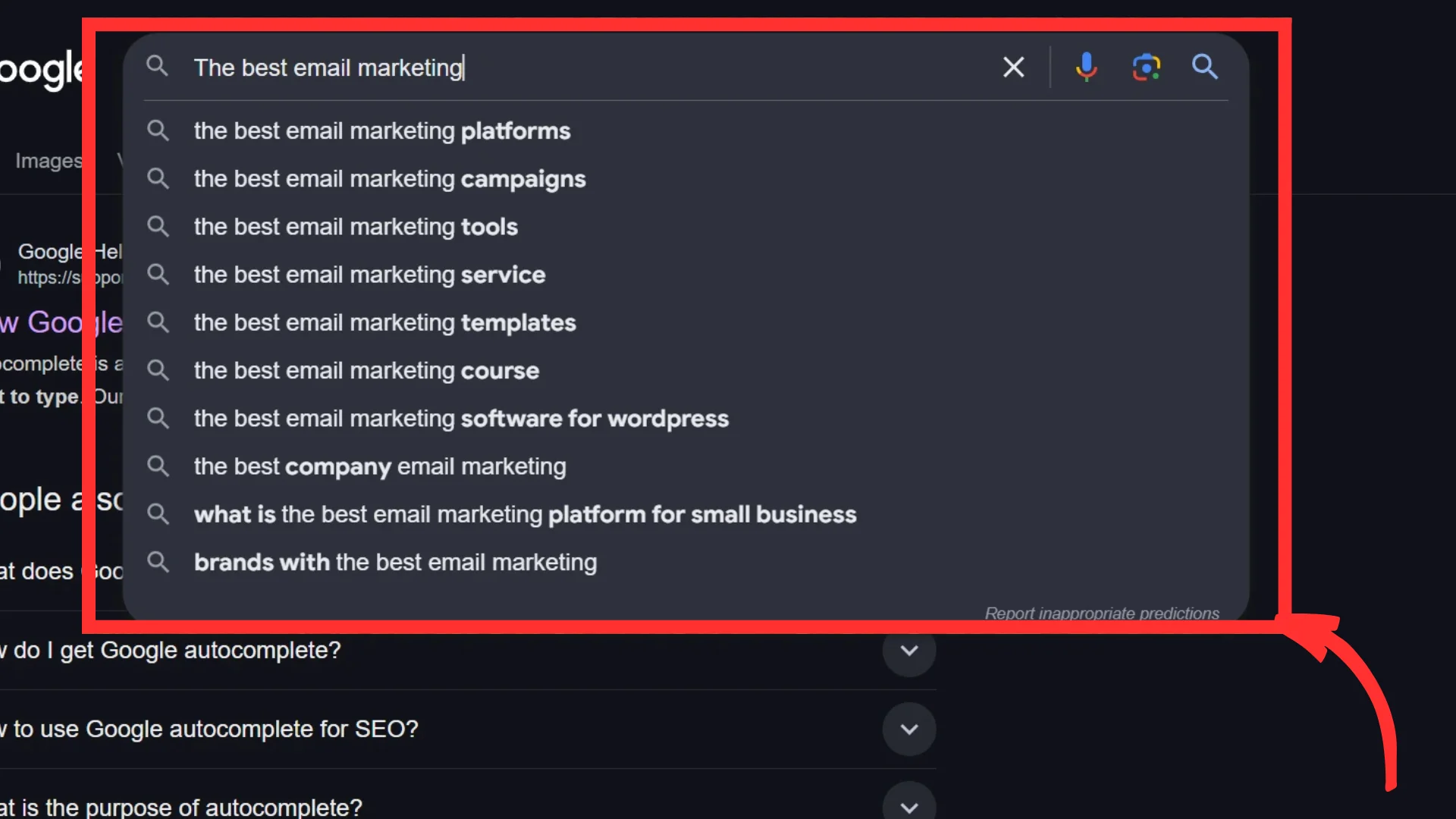
Once I saw that digital marketing tools had strong demand, good commissions, and room for a beginner like me, I committed to it. This choice made everything else easier.
Instead of randomly promoting products, I had a clear direction. I knew what kind of content to create, what tools to recommend, and most importantly, I knew that there was real money to be made in this space.
Must Read: How to Choose the Best Niche for Your Affiliate Marketing Business
Step 2: Building a Free Website or Blog
Once I knew my niche, I needed a place to share my content. But there was a problem—I had zero budget for a website. I thought affiliate marketing required a fancy website with paid hosting, custom themes, and all the bells and whistles.
Remember, it’s not a must to have a website to start affiliate marketing, but it’s important to have one. Also Read: Do You Need a Website to Start Affiliate Marketing? Here is My Take.
Turns out, that was just another myth. You don’t need money to start—you just need a free platform and a smart approach.
At first, I felt overwhelmed. Should I use WordPress.com? Blogger? Medium? Each had its pros and cons, and I didn’t want to waste time picking the wrong one. Here’s how I made my decision:
- WordPress.com – The most flexible free platform. It looked professional, but the free plan had limitations (like no custom domain).
- Blogger – Owned by Google, easy to use, and 100% free. But the design options were outdated.
- Medium – A clean, distraction-free platform where posts can go viral. But you don’t “own” your content the same way you would on a personal site.
I decided to go with WordPress.com because it gave me the most control. The setup was ridiculously simple—I just signed up, picked a free theme, and my site was live. No coding, no complicated settings, just a basic website ready to go. It wasn’t perfect, but it was good enough to start.
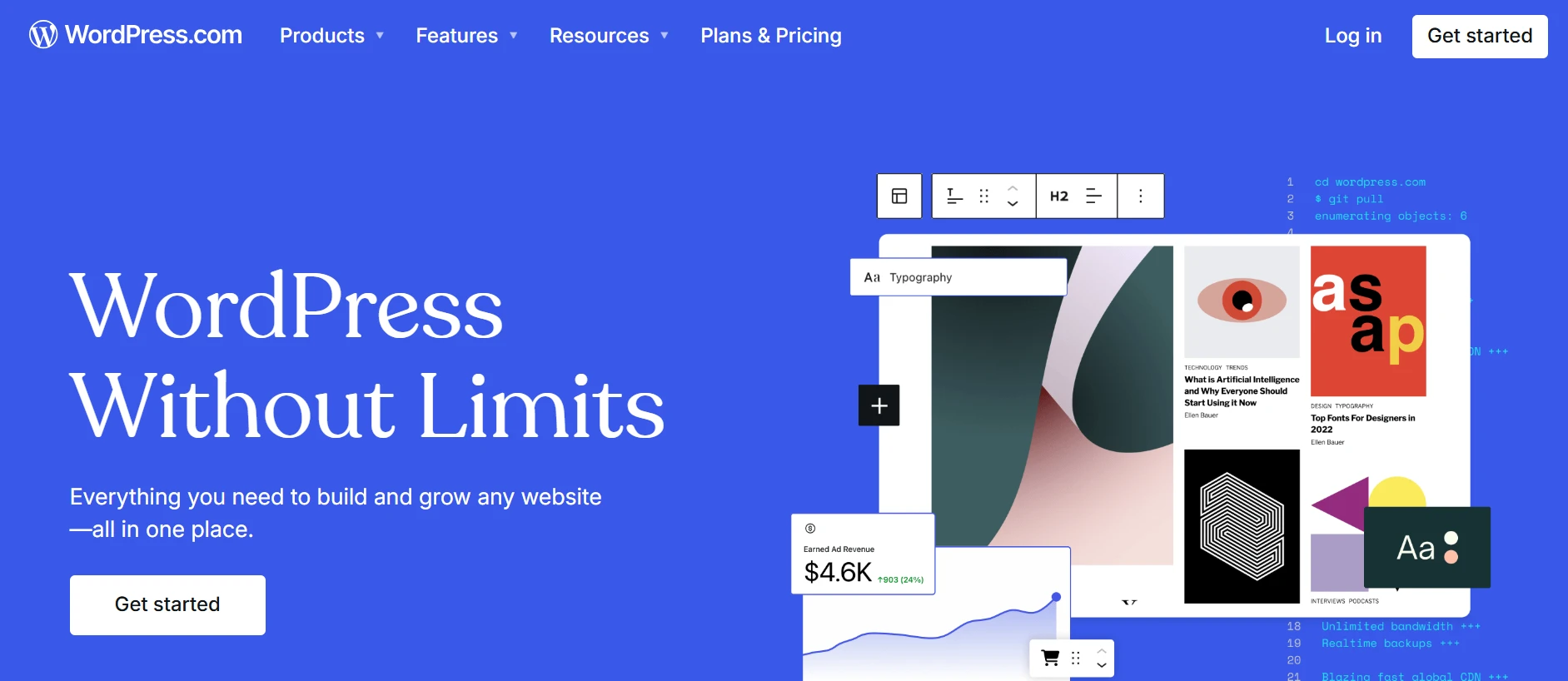
Click here to create your free WordPress website.
Now, let’s talk about the biggest mistake I almost made: obsessing over design. I spent hours trying to make my site look perfect—changing fonts, tweaking colors, adding widgets I didn’t even need.
But then I realized no one cares how pretty your site is if the content isn’t helpful. People visit a website to solve a problem, not admire the layout.
So I scrapped the distractions and kept it simple. A clean, easy-to-read design with a strong focus on valuable content. No flashy graphics, no complicated menus—just a homepage, an “About” page, and a blog where I started sharing what I learned about digital marketing tools.
And here’s the best part: Google doesn’t care if your site is free or paid—it cares about the content. As long as you write helpful articles and optimize for keywords, you can rank on search engines and get traffic.
My first posts were rough, but I focused on answering real questions people had about marketing tools. That’s when I started seeing small but steady traffic.
Starting with a free website had limitations. I couldn’t install plugins or use my own domain name. But here’s what mattered: I got started.
Too many people wait for the “perfect” setup, but that only leads to procrastination. If you’re on a budget, start with what you have. You can always upgrade later when you start making commissions.
Looking back, building a free website was the smartest move I made. It let me test the waters, build an audience, and prove that I could actually make money without spending a dollar.
Step 3: Choosing the Right Affiliate Programs (for Free)
At this point, I had my niche and a free website up and running. Now came the most important part—finding affiliate programs that actually paid well without needing me to spend a dime.
But here’s the thing: many programs require a certain amount of traffic before they let you in. I didn’t have that. I was starting from zero.
I knew I couldn’t waste time applying to programs that would reject me for having no audience. So, I focused on beginner-friendly affiliate programs that accepted new affiliates without strict requirements.
These programs didn’t ask for a huge following or an established brand—they just wanted genuine marketers who could drive sales.
I started with the easiest and most accessible option:
- Amazon Associates – Almost anyone can get in, and you can promote millions of products. The downside? Low commissions. But it was a great starting point.
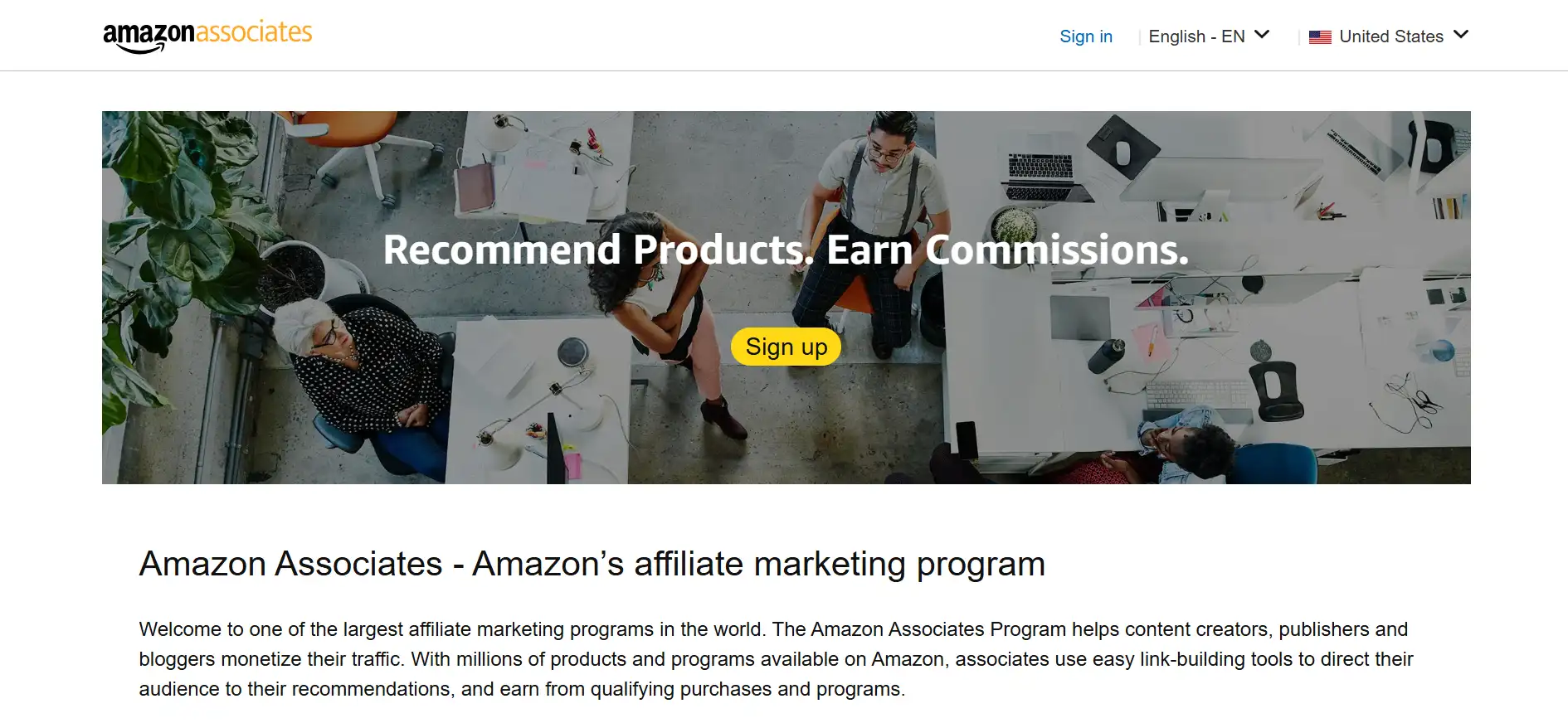
Then, I looked for higher-paying programs with better commissions and recurring revenue. That’s when I found:
- ShareASale – A massive network with thousands of brands. No minimum traffic requirements. Some merchants offer high commissions.
- CJ Affiliate (Commission Junction) – Another big network with tons of reputable brands. Some merchants required approval, but many accepted beginners.
- Impact – A more modern platform with solid tracking, great offers, and plenty of beginner-friendly brands.
How I Got Approved Without a Big Audience
Honestly, at first I was nervous about applying. What if they rejected me because my website was new? But I quickly learned that it’s all about how you position yourself. Here’s what worked for me:
- I made my website look professional. Even though it was free, I treated it like a real business. I had a clear niche, a simple design, and a few blog posts that added value. Programs want affiliates who look serious, not spammy.
- I wrote a strong application. When signing up, many programs ask how you plan to promote their products. I didn’t just say, “I’ll post links on my blog.” Instead, I explained that my site focused on digital marketing tools and that I planned to create detailed reviews, comparisons, and tutorials.
- I applied to programs that aligned with my content. If my blog was about digital marketing tools, it didn’t make sense to apply for fashion affiliate programs. Sticking to relevant programs increased my chances of approval.
Finding the Right Programs with High Commissions and Recurring Revenue
Not all affiliate programs are worth your time. Some pay pennies per sale, while others offer high commissions and even recurring revenue (where you get paid every month for a single referral).
I quickly realized that if I wanted to earn real money, I had to be picky about the programs I joined.
Here’s what I looked for:
- High commission rates – I focused on programs that paid at least 20% per sale instead of the usual 2-5%.
- Recurring commissions – Some programs (especially software and digital tools) pay you every month for as long as your referral stays subscribed. This builds passive income over time.
- Products I believed in – I didn’t just chase high commissions. I promoted tools and services I would actually use myself. That made my recommendations more genuine.
Also Read: Understanding the Affiliate Commission Structure: What It Is and How It Works
You don’t need money or a big audience to join affiliate programs. You just need a solid plan, the right programs, and a website that looks like it belongs to someone who takes this seriously.
I started small, applied strategically, and focused on programs that offered long-term earning potential. That’s how I got my first approvals and started earning commissions without spending any cash.
Step 4: Writing Content That Converts
Once I got approved for affiliate programs, I faced my next big challenge: getting people to click my links and actually buy.
I knew I couldn’t just throw random links on my website and hope for the best. That’s not how affiliate marketing works.
People don’t click links because they see them. They click when they trust the person recommending them. So, I focused on creating content that felt genuine, helpful, and natural. The goal wasn’t just to drive traffic—it was to build trust and provide value.

The Type of Content That Worked Best for Me
I experimented with different types of content, but a few formats stood out because they actually got clicks and conversions:
- In-Depth Product Reviews – I picked one digital marketing tool, tested it, and wrote an honest breakdown of its features, pros, cons, and who should use it. People love reviews when they’re about to buy something—they just want reassurance that they’re making the right choice.
- Comparison Articles – Instead of just reviewing one product, I compared two or more. Example: “Thrive Leads vs. OptinMonster: Which Email Capture Tool is Better?” These articles did really well because people searching for comparisons are already close to making a purchase.
- How-To Guides & Tutorials – Instead of pushing a product, I taught people how to solve a problem and naturally recommended a tool. Example: “How to Build an Email List from Scratch (Using GetResponse).” If the tutorial was useful, people didn’t hesitate to sign up.
- Listicles & Roundups – Example: “5 Best SEO Tools for Beginners.” These worked well because they gave people multiple options and made decision-making easier.
Must Read: 9 Best Free AI Writing Tools Every Affiliate Marketer Should Try
Finding the Right Keywords (For Free)
I didn’t have money for fancy SEO tools, so I had to get creative. Here’s how I found keywords that helped my content rank:
- Google Autocomplete – I started typing a keyword into Google and noted what popped up. If Google suggested it, it meant people were searching for it.
- Google Keyword Planner – A free tool inside Google Ads that shows search volume and competition. I used it to find long-tail keywords (less competitive but highly targeted).
- Ubersuggest – A free keyword research tool that gave me keyword ideas and SEO difficulty scores. It helped me pick topics I could actually rank for.
- AnswerThePublic – A tool that showed me what questions people were asking about a topic. These made great blog post ideas.
Placing Affiliate Links Naturally (Without Sounding Salesy)
One of the biggest mistakes beginners make? Forcing affiliate links into their content like a used car salesman. Readers can smell desperation from a mile away. If they feel like they’re being sold to, they leave.
Here’s how I kept my content natural while still making commissions:
- I recommended products as solutions, not sales pitches. Example: Instead of saying, “Buy this tool now!” I said, “I’ve used [Affiliate Product] to automate my email marketing, and it’s saved me hours of work.”
- I placed links where they made sense. Instead of stuffing links everywhere, I added them only where they felt natural—like after explaining how a tool helped me.
- I used buttons and call-to-action boxes. Example: After a review, I’d add a box saying, “Try [Affiliate Product] here,” instead of randomly throwing links in the middle of a sentence.
- I created urgency without sounding pushy. If a product had a free trial or discount, I’d mention it casually: “Right now, [Affiliate Product] is offering a free 14-day trial, so it’s a good time to test it out.”
Content is the heart of affiliate marketing. If your content isn’t helpful, no one will trust your recommendations.
I focused on writing articles that answered real questions, placed my links naturally, and gave people value before expecting anything in return. That’s what made them click—and more importantly, buy.
Also Read: Why Valuable Content Wins in Affiliate Marketing (And How to Create It)
Step 5: Leveraging Social Media for Free Traffic
At this point, I had my website, some solid content, and a few affiliate links in place. But there was one major problem—no one was reading it.
I didn’t have money for ads, so I had to figure out a way to get free traffic. I turned to social media. But not in the spammy, “drop-your-link-everywhere” way that so many beginners do.
I knew that if I wanted real traffic, I had to show up, contribute, and be valuable.

How I Used Facebook Groups, Reddit, and Twitter to Drive Traffic
At first, I made the same mistake most people make—I joined a few groups, posted my link, and waited for the magic to happen. Nothing happened. No clicks, no engagement, no traffic.
In some cases, my posts even got deleted. I realized social media isn’t about dumping links—it’s about real conversations.
Facebook Groups: My Goldmine for Targeted Traffic
Instead of spamming links, I started joining Facebook groups where my audience hung out. Since my niche was digital marketing tools, I looked for groups where people discussed SEO, blogging, email marketing, and affiliate marketing.
Here’s what I did differently:
- I engaged first. I answered questions, gave tips, and joined discussions without dropping a link. This built trust.
- I shared valuable posts. If someone asked about SEO tools, I didn’t just say, “Use Semrush.” I explained why I liked it, how it helped me, and THEN mentioned I wrote a detailed guide (with my affiliate link inside).
- I became a regular. Instead of posting once and disappearing, I showed up consistently. Over time, people started recognizing my name and trusting my content.
The result? People actually clicked my links because they wanted my recommendations, not because I forced them.
Reddit: The Tough Crowd That Paid Off
Reddit is tricky. If you drop an affiliate link there, you’ll get banned faster than you can blink. But if you use it correctly, it can send a flood of traffic.
Here’s what worked for me:
- I found the right subreddits. Instead of posting in broad marketing communities (where competition was high), I looked for smaller, highly engaged subreddits focused on blogging, side hustles, and affiliate marketing.
- I gave REAL value before ever mentioning my blog. If someone asked, “What’s the best free SEO tool?” I’d explain why I liked Ubersuggest, how I used it, and then casually mention, “I actually wrote a full breakdown of the best free SEO tools. Happy to share if anyone’s interested.”
- I didn’t force it. Redditors hate obvious self-promotion. But if you genuinely help people, they’ll actually ask for your link.
One of my Reddit posts brought in over 500 visitors in a day—all from answering a single question in detail.
Twitter (Now X): Building Authority with Quick Tips
Twitter wasn’t my biggest traffic driver, but it helped me establish credibility. I focused on:
- Sharing bite-sized tips daily (like “One free SEO tool that changed my blog: [tool]”).
- Engaging with industry influencers (replying to their tweets, adding insights).
- Promoting my content naturally by tweeting short insights from my blog posts, then linking to the full article.
Over time, I built a small, engaged audience that trusted my recommendations.
My Pinterest Strategy That Brought in Consistent Visitors
If Facebook was great for community engagement and Reddit was great for quick bursts of traffic, Pinterest was my secret weapon for long-term, passive traffic.
I treated Pinterest like a search engine, not a social network.
Here’s exactly what I did:
- I created eye-catching pins using Canva. Simple, bold text with strong colors worked best.
- I focused on searchable topics. Instead of “My Experience with Affiliate Marketing,” I titled my pins “How to Start Affiliate Marketing for Free (Step-by-Step)”—because that’s what people were actually searching for.
- I joined group boards. This got my pins in front of bigger audiences instead of waiting for my small account to grow.
- I pinned consistently. I posted at least 5 pins per day using a free scheduling tool. More activity = more exposure.
Within two months, Pinterest became my #1 traffic source, sending me hundreds of visitors per week—all without spending a dime.
Why Engaging with Communities (Not Spamming Links) Made All the Difference
At the end of the day, people don’t click on links from strangers. They click on links from people they trust. If I had just spammed my blog everywhere, I would have gotten ignored (or banned).
But by showing up, providing value, and earning trust, people wanted to check out my content.
Social media is powerful, but only if you use it the right way. I didn’t need paid ads. I just needed to show up, be helpful, and guide people to my content in a way that felt natural. And when I did that? The traffic came.
If you want to schedule posts, analyze performance, and grow your audience, then I would recommend SocialPilot, it has saved me so much time by scheduling posts in advance and keeping my content consistent. It made growing my traffic feel effortless.
Step 6: Tracking Performance and Optimizing
After putting in all that work—building my website, creating content, and promoting my links—I couldn’t afford to sit back and hope for the best.
I needed to know what was actually working. Was my content bringing in the right audience? Were people clicking my affiliate links? More importantly, were those clicks turning into commissions?
At first, I had no clue how to track anything. I just kept publishing content, sharing links, and hoping for sales. But hope doesn’t pay the bills. Once I started tracking my performance, I saw exactly where my money was coming from. That’s when everything changed.
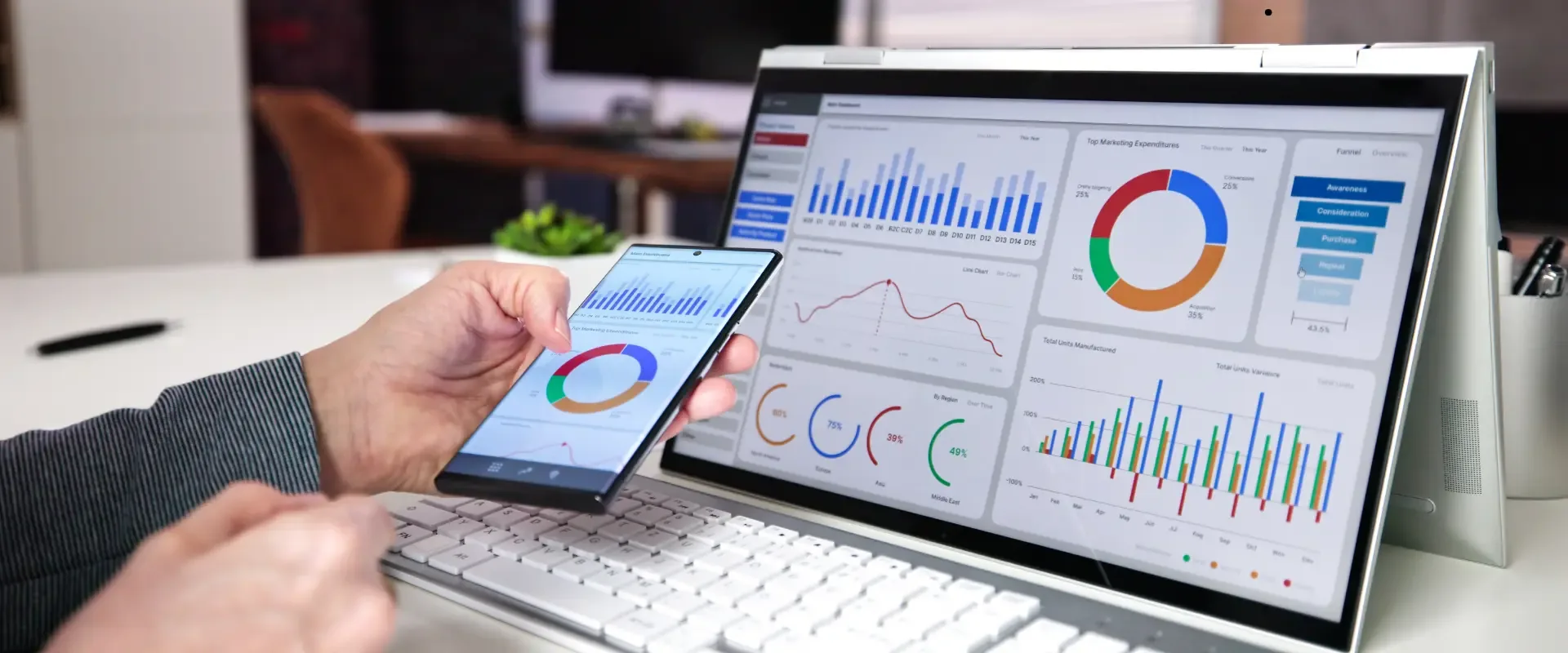
Free Tools I Used to Track Clicks and Conversions
I wasn’t about to spend money on fancy tracking software, so I went with the best free tools I could find:
- Google Analytics – Helped me see where my visitors were coming from and which pages kept them engaged the longest. If a blog post had high traffic but low clicks, I knew something needed fixing.
- ThirstyAffiliates – This free WordPress plugin let me shorten and organize my affiliate links. But the best part? It tracked which links got the most clicks, so I knew exactly which products people were interested in.
- Bit.ly – I used this for social media links. It showed me how many clicks my links got on platforms like Pinterest, Twitter, and Facebook.
- Affiliate Program Dashboards – Every affiliate program has its own tracking dashboard. Amazon Associates, ShareASale, and CJ Affiliate showed me which links led to commissions.
Once I had these tools in place, I finally had real data to work with.
What I Learned from Monitoring My Best-Performing Content
Honestly, I was shocked by some of my results. I had posts I thought would make me money but barely converted. Meanwhile, some random blog posts were quietly bringing in commissions. Here’s what I discovered:
- Not all traffic is equal. Visitors from Google search were way more likely to buy than visitors from Pinterest. SEO traffic was pure gold.
- Some content types convert better. My comparison articles (e.g., “Best Email Marketing Tools for Beginners”) made way more money than my general blog posts.
- Link placement matters. When I buried my affiliate links at the bottom of an article, they barely got clicked. But when I added them near the top? Clicks shot up.
This was eye-opening. Instead of guessing what worked, I had cold, hard data telling me exactly where to focus my energy.
Small Adjustments I Made That Boosted My Earnings
With this new knowledge, I didn’t have to work harder—I just had to work smarter. Here’s what I changed:
- I moved my affiliate links higher in my content. If someone was interested, I wanted them to see the link right away.
- I added clear call-to-action buttons. Instead of just linking text, I used buttons like “Try GetResponse for Free.” These got way more clicks.
- I focused more on SEO-friendly content. Since search traffic converted better than social media, I optimized my posts for Google rankings.
- I dropped low-paying affiliate programs. Some programs brought in traffic but barely paid anything. I switched to ones with higher commissions.
These weren’t huge changes, but they made a massive impact. Before, I was just hoping for sales. Now, I had a strategy. Tracking my performance gave me control over my income—and that’s when my earnings really started to grow.
Results: My First Commission and Lessons Learned
I’ll never forget the moment I saw my first commission. It was small—just a few dollars—but it felt like I had made it. All the time I spent researching, writing, and promoting finally paid off.
That tiny sale proved that this whole affiliate marketing thing actually worked.
How Long It Took to Make My First Sale
It didn’t happen overnight. In fact, it took three months of hard work and consistency before I earned my first commission. The waiting was brutal. I kept refreshing my dashboard, hoping to see a sale, but for weeks—nothing.
I started doubting myself. Maybe I picked the wrong niche. Maybe my content wasn’t good enough. Maybe I just wasn’t cut out for this.
But then, out of nowhere, I logged in and saw it—my first sale. Someone had clicked my link and bought a digital marketing tool I recommended. It was a tiny commission, but it changed everything. I knew if I could make one sale, I could make more.
The Biggest Challenges I Faced and How I Overcame Them
- Getting Traffic Without a Budget – I had no money for ads, so I relied on SEO and social media. Pinterest and Facebook groups helped in the beginning, but Google search traffic was the real game-changer.
- Staying Motivated Without Results – Not seeing sales for months was tough. What kept me going was focusing on the process instead of the money. Every blog post, every social media share—it all added up.
- Figuring Out What Actually Worked – At first, I was blindly creating content. Once I started tracking performance, I doubled down on the strategies that worked and dropped what didn’t.
What I Would Do Differently If I Started Again
Email marketing is very crucial and if I could start over, I’d focus on building an email list from day one. I didn’t realize how powerful an email list was until much later.
Social media traffic comes and goes, and Google rankings can change overnight. But an email list? That’s your audience. Your direct line to people who trust you.
If I had collected emails early on, I could have built a loyal audience and made sales faster. Instead of just hoping people would return to my site, I could have sent them straight to my best content and offers.
Looking back, I made plenty of mistakes, but I wouldn’t change a thing. Every challenge taught me something. And that first commission? It was just the beginning.
Conclusion & Next Steps
Affiliate marketing isn’t a quick win, but patience and consistency make all the difference. I started with no money, just a strong determination to make it work.
Every step, from picking the right niche to writing valuable content and promoting it for free helped me move forward. My first commission wasn’t much, but it proved that this path works, even without upfront investment. The biggest lesson? Focus on providing real value, not just pushing links.
If you’re starting with $0, don’t let doubt hold you back. Use free platforms, join affiliate programs that don’t require approval, and drive traffic through content and social media.
Most importantly, track your progress and refine what works. My next step is growing my email list to build a long-term, sustainable business. If you want to be successful in affiliate marketing, start today—small actions add up, and your first commission will come sooner than you think.
Frequently Asked Questions
Can I really start affiliate marketing without spending any money?
Yes, I did it, and so can you. Many platforms let you join affiliate programs for free, and you can promote links using free tools like WordPress.com, Medium, and social media. The key is to focus on creating valuable content and driving organic traffic.
How long does it take to make your first commission?
It depends on how consistent you are. Some people earn in a few weeks, while others take months. My first sale came after publishing multiple blog posts and sharing them in the right places. The more effort you put in, the faster you’ll see results.
Do I need a website to succeed?
A website helps, but it’s not required at the start. I began by using free platforms like Medium and Facebook groups. However, if you’re serious about long-term success, setting up a simple blog (even on a free WordPress site) gives you more control over your content and audience.
Which affiliate programs are best for beginners?
I started with beginner-friendly programs that don’t require prior experience or traffic, like:
Amazon Associates – Easy to join, huge product selection.
ShareASale & CJ Affiliate – Great for finding niche-specific offers.
Impact – Works with top brands and pays well.
These programs have a simple approval process and offer plenty of products to promote.
How do I get traffic to my affiliate links without paid ads?
I used a mix of content marketing and social media to drive traffic for free:
SEO – Optimized blog posts for search engines.
Pinterest – Created eye-catching pins linking to my content.
Facebook groups & Reddit – Provided value in discussions before sharing links.
YouTube & TikTok – Short videos can generate traffic fast.
It’s all about being helpful, not spammy—that’s what gets clicks.
What would you do differently if you started again?
I’d build an email list from day one. Collecting emails lets you nurture relationships and promote offers directly instead of relying on social media algorithms. If I had started capturing leads earlier, I would have made money faster and more consistently.
Got more questions? Drop them in the comments—I’ll be happy to share what I’ve learned!
